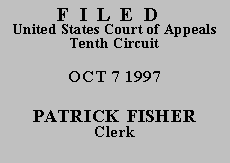

| UNITED STATES OF AMERICA,
Plaintiff-Appellee, v. WILMA FAY COFFMAN, a/k/a Fay Gist, a/k/a Estell Gist, Defendant-Appellant. |
|
Defendant appeals from the sentence imposed after she pled guilty to one count of telemarketing fraud. We have jurisdiction under 28 U.S.C. § 1291 and 18 U.S.C. § 3742. We affirm in part, and remand for resentencing.
Defendant filed objections to the presentence report. Insofar as they are relevant to this appeal, defendant challenged the probation officer's assertions: (1) in paragraph 19 that eleven points should be added to the base offense level because the actual or intended loss from the telemarketing fraud exceeded $800,000 but was less than $1,500,001; (2) in paragraph 22 that two points should be added because defendant deliberately selected victims who were unusually vulnerable to telemarketing schemes; and (3) in paragraph 21 that two points should be added because defendant represented a fictitious charity.
After a hearing, the district court summarily overruled all of defendant's objections to the presentence report. The court adopted paragraphs five through thirteen of the presentence report as to the facts of the case, and determined that the applicable guideline range was fifty-one to sixty months' imprisonment. See R. Vol. IV at 87-88. The court noted that defendant had already been convicted and sentenced in Mississippi to twenty years' imprisonment for telemarketing fraud at the time of her indictment in the Northern District of Oklahoma, and that the guidelines required defendant's Oklahoma sentence to run concurrently with her Mississippi sentence. Because defendant was also entitled to credit for the eleven months she had already served in Mississippi, the court sentenced defendant to forty-nine months' imprisonment, to run concurrently with her Mississippi sentence. See id. at 88-89.
On appeal, defendant argues that the sentencing court: (1) violated her rights by communicating ex parte before the sentencing hearing with one of the government's witnesses; (2) failed to make written findings on all controverted factual matters in the presentence report, as required by Fed. R. Crim. P. 32(c)(1); and (3) erred by finding that defendant targeted vulnerable victims, that she solicited on behalf of a fictitious charity, and that the actual or intended amount of the loss exceeded $800,000.
Defendant has not shown that the district court violated her rights by communicating ex parte with one of the government's witnesses. While talking with the probation office on the morning of the sentencing hearing, the district court had occasion to ask the Special Assistant Attorney General for the State of Mississippi, Jean Smith Vaughan, how much of defendant's twenty-year Mississippi sentence defendant would probably serve. Ms. Vaughan's opinion was that defendant was likely to serve a minimum of about five years in Mississippi. The court took this information into account in determining defendant's Oklahoma sentence because the guidelines required the court to make it concurrent to her Mississippi sentence, and the court wanted to make sure that it did not extend beyond the Mississippi sentence. See R. Vol. IV at 72.
Defendant asserts without much elaboration (and no case law) that this ex parte communication was a constitutional error that had a substantial influence on the sentence imposed against her. See United States v. Garcia, 78 F.3d 1457, 1465 (10th Cir.), cert. denied, 116 S. Ct. 1888 (1996). We are not persuaded. Defendant did not object or seek to cross-examine Ms. Vaughan when the court revealed at the sentencing hearing that it had obtained information from her ex parte, and defendant has not shown that the information obtained was incorrect or that it prejudiced her. We therefore find no error on this point.
We agree, however, that the district court improperly failed to make required written findings in this case. Federal R. Crim. P. 32(c)(1) requires the sentencing court to make findings on each objection to the presentence report, or state that no findings are required because the controverted material either will not be taken into account or will not affect sentencing. See, e.g., United States v. Henning, 77 F.3d 346, 349 (10th Cir. 1996). The rule also requires the court to reduce its findings to writing and attach them to the presentence report. See id. The sentencing court does not meet its burden by adopting the presentence report. See id. Nothing in our cases allows us to accept the district court's failure to actually make written findings and attach them to the presentence report. See, e.g., United States v. Roederer, 11 F.3d 973, 977, 983 (10th Cir. 1993) (affirming sentence but remanding for findings required under former version of Rule 32(c)(1)); United States v. Price, 945 F.2d 331, 333 (10th Cir. 1991) (remanding for resentencing); United States v. Alvarado, 909 F.2d 1443, 1444-45, 1447 (10th Cir. 1990) (remanding for resentencing and findings). Moreover, when a sentence enhancement is sought on the basis that the defendant targeted an unusually vulnerable victim, "the sentencing court [must] make particularized findings of vulnerability." United States v. Lee, 973 F.2d 832, 834 (10th Cir. 1992). The case must be remanded. Accordingly, we do not reach defendant's other issues.
The decision of the United States District Court for the Northern District of Oklahoma is AFFIRMED IN PART, and the case is REMANDED for resentencing and appropriate findings pursuant to Fed. R. Crim. P. 32(c)(1).
Entered for the Court
Circuit Judge
*. This order and judgment is not binding precedent, except under the doctrines of law of the case, res judicata, and collateral estoppel. The court generally disfavors the citation of orders and judgments; nevertheless, an order and judgment may be cited under the terms and conditions of 10th Cir. R. 36.3.